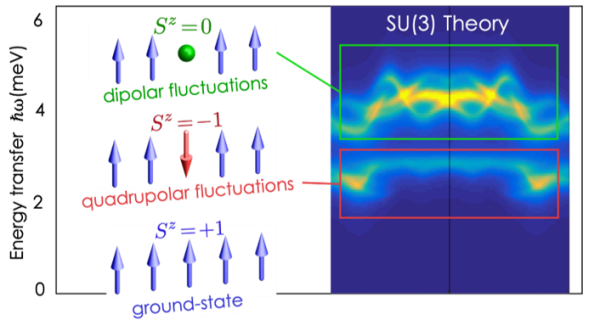Quadrupolar Fluctuations in a Spin-1 Magnet

Scientific Achievement
It is shown that normally invisible quadrupolar spin fluctuations dominate the excitation spectrum of ordered FeI2.
Significance and Impact
The work shows how the effect of spin-orbit coupling can hybridize dipolar and quadrupolar fluctuations, leading to unexpected quantum excitations despite the classical ground-state, a result that may be applicable to a range of other materials with hitherto unexplained multipolar excitations.
Research Details
- Successful comparison with SU(3) generalized spin-wave theory explained the observed neutron scattering and allowed extraction of most details of the complex magnetic Hamiltonian of FeI2.
- Anisotropic exchange interactions are identified as the mechanism behind the dipolar-quadrupolar hybridization, solving a 40+ year old puzzle.
“Hybridized quadrupolar excitations in the spin-anisotropic frustrated magnet FeI2,”
Xiaojian Bai, Shang-Shun Zhang, Zhiling Dun, Hao Zhang, Qing Huang, Haidong Zhou, Matthew B. Stone, Alexander I. Kolesnikov, Feng Ye, Cristian D. Batista and Martin Mourigal,
Nature Physics 17, 467–472 (2021).
OI: https://doi.org/10.1038/s41567-020-01110-1







